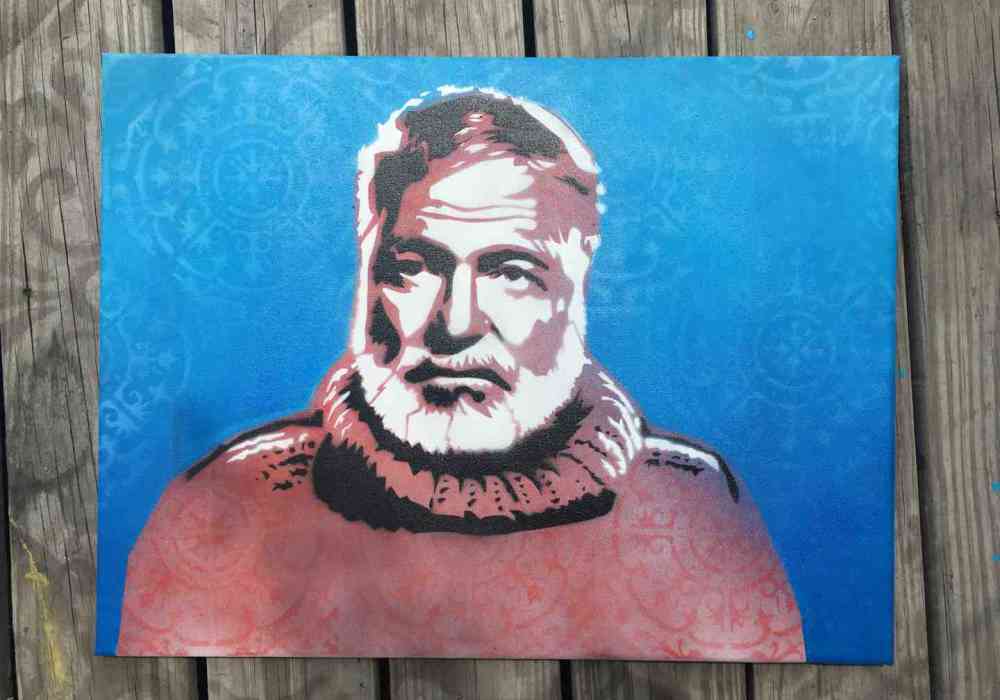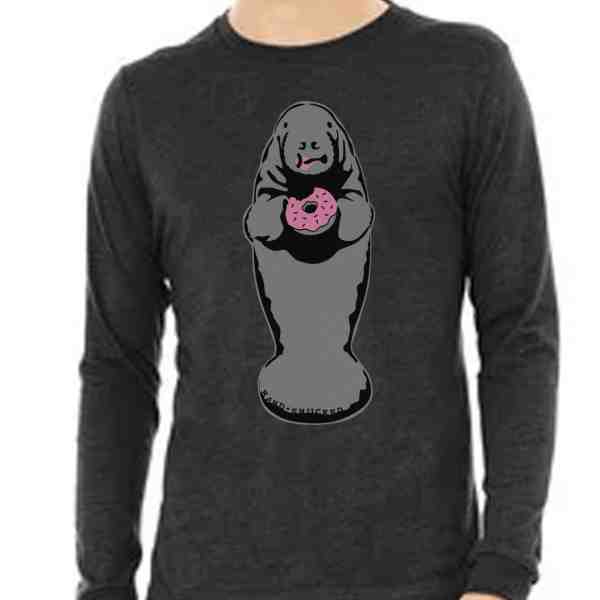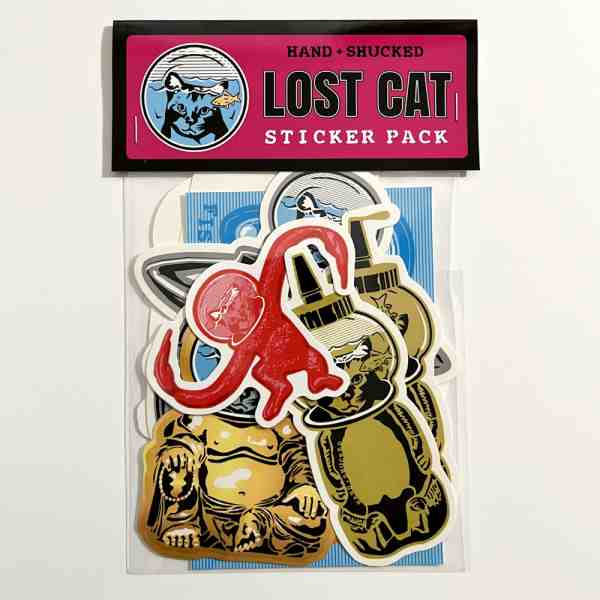Why Hemingway’s Cats Have Six Toes: A Fascinating Story
Six-toed cats are a captivating curiosity. Also known as polydactyl cats, these feline wonders often steal the show with their extra toes. But the most famous group of these cats belongs to none other than the legendary author, Ernest Hemingway.
In the sun-drenched paradise of Key West, Hemingway’s affection for these unique creatures left a lasting legacy. Why do some cats have six toes? It’s all about genetics and a little serendipity. While most cats have 18 toes, these special felines might have up to 28. They’re not just beautiful oddities; their extra digits can offer them unusual dexterity.
Once gifted a six-toed cat named Snow White by a ship’s captain, Hemingway became enamored, and today his former home is alive with their descendants — a real-life testament to his love for these furry companions.
My name is Chris Higgins, and my journey as an artist and designer in Key West has often brought me into contact with the history and charm of six-toed cats. Through Handshucked Designs, I explore and share the vibrant stories of this unique locale. Let’s dive deeper into Hemingway’s cats and the intriguing phenomenon of polydactylism.
The Origin of Six-Toed Cats
The tale of six-toed cats begins with a ship’s captain and a kitten named Snow White. In the 1930s, a sea captain named Stanley Dexter gifted Ernest Hemingway with this special feline. Snow White was no ordinary cat; she had six toes on each of her front paws, a trait that fascinated Hemingway and would soon become part of his legacy.
But why did Snow White have these extra toes? It’s all thanks to a genetic trait known as polydactyly. This trait is caused by a dominant gene that can result in cats having more than the usual number of toes. While typical cats have 18 toes, polydactyl cats can have up to 28!
Polydactyl cats were considered good luck by sailors. Their extra toes made them excellent mousers, which was a valuable trait on ships where food supplies needed protection from rodents. This belief in their luckiness and utility is likely why Captain Dexter thought Snow White would be a perfect companion for Hemingway.
Snow White’s unique genetic makeup didn’t just end with her. Today, Hemingway’s former home in Key West is teeming with her descendants. These cats have become a living part of the house’s history, with around half of them still boasting those charming six-toed paws. Visitors to the Hemingway Home & Museum can see these cats roaming the grounds, a testament to the serendipitous gift from a ship’s captain that sparked a lifelong affection in one of America’s greatest writers.
The Unique Traits of Six-Toed Cats
Six-toed cats, also known as polydactyl cats, are more than just a genetic curiosity. They have several unique traits that make them fascinating to cat lovers and casual observers alike.
Better Athletes
The extra toes on these cats aren’t just for show. They can actually make them better athletes. With more digits, these cats have improved gripping abilities, which helps them climb and balance more effectively. Some owners report that their six-toed felines are exceptional climbers and hunters, able to steer tricky surfaces with ease.
Imagine a cat scaling a tree or a fence with the agility of a tiny acrobat. Those extra toes give them a wider paw, providing better support on uneven surfaces.
Lucky Cats
In various cultures, six-toed cats are considered lucky. This belief is rooted in their history with sailors, who thought these cats brought good fortune and were excellent at catching mice. Sailors valued them as shipmates, believing their presence would ensure safe and prosperous voyages.
Even today, people in places like Great Britain and the East Coast of the United States see these cats as a boon, often associating them with good luck and prosperity.
Conversation Starters
Owning a six-toed cat is sure to spark interesting conversations. Their unique paws make them stand out, and cat fanciers often enjoy sharing stories about their special pets. These cats have even inspired dedicated fan pages on social media, where owners can connect and share their experiences.
Visitors to the Hemingway Home & Museum in Key West, where many six-toed cats roam, are often intrigued by these unusual felines. The museum’s cats, with their storied past and unique appearance, continue to capture the imagination of cat lovers and literary enthusiasts alike.
In summary, six-toed cats are not just a genetic anomaly; they are better climbers, cherished for their luck, and always a topic of conversation. Their unique traits make them beloved companions and a fascinating subject for anyone interested in the quirks of feline genetics.
The Legacy of Hemingway’s Cats
The Hemingway Home & Museum in Key West is not just a tribute to a legendary author; it’s also a living testament to his love for six-toed cats. These cats have become almost as famous as Hemingway himself, drawing visitors from around the world to see them in their natural habitat.
Hemingway Home and Museum
Ernest Hemingway’s former residence is now a museum that celebrates both his literary contributions and his affection for cats. The house, located at 907 Whitehead Street, is surrounded by lush gardens where approximately 60 polydactyl cats roam freely. Many of these cats are descendants of Hemingway’s original pet, Snow White, a six-toed cat gifted to him by a ship’s captain in the 1930s.
Visitors can explore Hemingway’s writing studio, where he penned some of his greatest works, and see the cats lounging in the sun or napping in cozy corners. The museum is open every day of the year, making it a popular destination for cat lovers and literary enthusiasts alike.
Famous Names
One of the charming traditions at the Hemingway Home & Museum is naming the cats after famous people. This practice started with Hemingway himself and continues today. Each cat has a unique personality and a name that reflects its character. Visitors delight in meeting cats named after celebrities, historical figures, and even literary icons.
The cats at the museum are more than just attractions; they are part of the experience. They embody the spirit of Hemingway’s life in Key West and add a special touch to the museum’s atmosphere. Their playful antics and affectionate nature make them beloved by staff and guests alike.
A Lasting Impact
The legacy of Hemingway’s cats extends beyond the museum walls. They have become symbols of Key West’s quirky charm and are an integral part of the island’s cultural fabric. The annual Hemingway Days Festival celebrates the author’s life and work, drawing fans of his literature and admirers of his feline companions.
The six-toed cats of the Hemingway Home & Museum continue to captivate and inspire. They remind us of the connection between Hemingway’s adventurous spirit and his enduring love for these unique animals.
Frequently Asked Questions about Six-Toed Cats
What breed of cat has six toes?
Six-toed cats, also known as polydactyl cats, can be found in various breeds. However, the American Polydactyl and the Maine Coon Polydactyl are the most recognized.
- American Polydactyl: This isn’t a distinct breed but rather a category of cats known for having extra toes. They are often affectionate and make great companions.
- Maine Coon Polydactyl: Historically, up to 40% of Maine Coons were polydactyl. These cats are known for their large size and friendly nature, and the extra toes can make them even more charming.
Are six-toed cats rare?
Six-toed cats are not as rare as you might think. They are quite common along the East Coast of the United States and Canada, as well as in parts of England and Wales. The trait is inherited in an autosomal dominant manner, meaning that if one parent has the gene, there’s a good chance the kittens will too. This makes polydactyl cats relatively common in certain areas.
Are polydactyl cats a problem?
Polydactyl cats are generally healthy, but like all cats, they need proper care.
- Health: The extra toes usually do not cause health issues. However, it’s important to monitor them to ensure they don’t affect the cat’s walking or cause discomfort.
- Nail care: With more toes comes the need for more nail care. Owners should regularly check and trim the nails on the extra toes to prevent them from growing into the paw pad, which can be painful for the cat.
In summary, while six-toed cats may have a unique appearance, they are just as healthy and loving as any other cat, provided they receive the right care.
Conclusion
At Handshucked Designs, we are inspired by the charming uniqueness of six-toed cats and the vibrant culture of Key West. Our location in this lively island town allows us to draw from its rich history and artistic spirit, which is evident in our original art and designs.
Key West is not just a place; it’s a muse. This island’s colorful history, from Hemingway’s legacy to its thriving art scene, fuels our creativity. Our Lost Cat series, featuring pieces like the “Buddha Cat” and “Lucky Cat,” embodies this blend of tradition and innovation.
We believe in creating art that tells a story, much like the story of Hemingway’s six-toed cats. These cats, with their unique polydactyl trait, have become a symbol of Key West’s quirky charm, and we strive to capture that essence in every piece we create.
If you find yourself in Key West, come visit us at our studio and gallery. Find the unique art that celebrates the spirit of this island and the legacy of its famous cats. Explore our Handshucked Designs to see how we bring the magic of Key West to life in our work.






